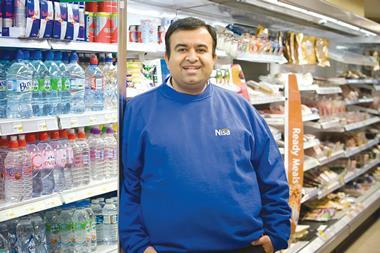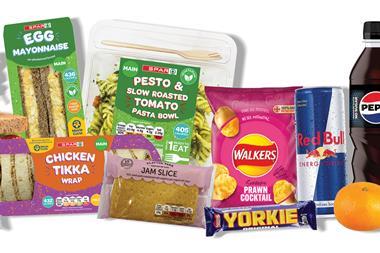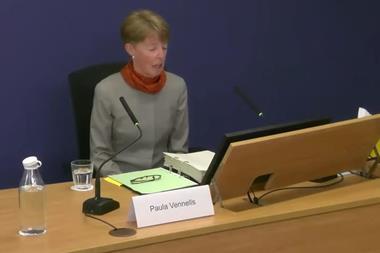More and more retailers are investing in epos, but the majority are failing to use this smart technology to analyse data and save money
If you’d just forked out for the latest all-singing, all-dancing smartphone, there’s no way you’d use it only for phone calls, but many retailers are doing the equivalent with their epos solutions.
As the nation continues to embrace the digital age, a growing number of convenience stores are adopting epos technology. In fact, 69% of retailers now have epos, compared with 60% in 2017, according to the Association of Convenience Store’s Local Shop Report. But while many are investing in the kit, they are not getting the full benefits.
“Are all these retailers using it to its full potential? I think the simple answer to that is no,” says James Widdowson, group sales director at epos provider Point Four.
“Point Four are very proud that more than 40% of their stores perform stock control and more than 60% use assisted ordering,” says Widdowson. However, he notes that this is above the industry average of about 15% for both.
“There is definitely room for improvement, but this does depend on the epos system and the functions it offers,” Widdowson adds.
He claims that simply implementing stock control and assisted ordering correctly could improve a store’s profits by 2.6-3.2%. And for those who are prepared to embrace their systems to really get a grip on stock control, the rewards are very handsome indeed.
“A multi-site customer approached Point Four to help them reduce stock-holding in-store, a problem that affects many retailers and creates not only an issue with space, but also cash flow and so on,” says Widdowson.
Having implemented Point Four’s system to produce suggested orders, he claims the retailer saved more than £1.5m in stock-holding value.
Richard Inglis, who operates a VME epos system, is confident that he is using his system to its full potential and is eager for more retailers to take full advantage of epos. “I know loads of people who have epos, but they don’t do automatic ordering,” says Richard, who owns three Welcome Co-op stores in Southampton, including Liberty Quays, winner of the Convenience Retail Award’s Best Use of Technology Award.
“Once you have full stock control of a category, you can tweak it further and you can tell the computer that you want a minimum stock level, so for low-selling canned options you can say you don’t want anything coming in until you only have six cans on the shelf. That way, when the delivery comes you can put it straight out.”
He explains that it isn’t just about minimising your stock-holding, but maximising efficiencies. “When a delivery comes into our stores, we’re looking for most of that delivery to go straight onto the shopfloor and not into our store room. It avoids double handling.
“We only want to move stock once - off cage onto shelf, not part on shelf, part in stock room and then handling it a third time back on the shelf. It’s a waste of money.”
He says that only by having every single line input into their epos system can retailers truly take control of their stock. “The number of tins of baked beans and milk we sell doesn’t vary dramatically so there’s no reason not to have it on the system.”
One retailer who is in the process of achieving full stock control is Peter Bhadal, who runs Londis Woodhouse Street in Leeds, which recently relaunched as a concept store. “The old Torex system we had was running on Windows 98. The hardware was quite old, so it was naturally a time of progression for us to move forward,” says Peter.
“We’ve had a HTEC system since last September - it was one of the major changes we were implementing in the store, along with the store refit,” he says. “Currently, we’re stocktaking the basics: cigarettes; alcohol; the high value products. But we’re moving that on to get full stock control from a to z, that’s our next goal.”
He claims that the local population changes dramatically at different times of year because the store is in a student area. “We’re in the process of developing a system where we can do automated ordering - a system that can handle the data where it can see the forecast of when students arrive and go,” he says.
Since purchasing the system, Peter has been busy analysing sales data across different categories, and optimising ranges. “We didn’t have the capability to do it with the old system - you couldn’t manipulate the data as much,” he says.
But the new epos allows him access to numerous reports. “I spend a couple of hours a week looking at sales data. The end game is profitability. We’re looking at what’s slow selling and what’s fast, and seeing if there’s a better line that can take the shelf space. We also use dashboards to get a quick glance at sales history, hourly customers and basket spend.”
Peter has already reaped the rewards of utilising the system. “A quick win was with our in-store bakery, Country Choice,” he explains. “We initially implemented sausage and bacon baps in the morning and we soon realised that the student population don’t get out of bed too early.
“The dashboard and data helped us to identify our peak trading times. We noticed that 11am onwards was when our footfall increased considerably. Between 7am and 11am it was steady, but lunchtime trade was higher and tea time trade increased, too. So we focused on the afternoon and the evening instead to improve sales.”
Data analysis is central to Best-one retailer Kay Patel’s business strategy. “I use Image Soft epos. With pricing we squeeze out margins. I’m constantly monitoring prices. We’re not at rrp on everything, we play off the stores against each other - we’ll increase the price at one store and see how it impacts sales, and if it doesn’t we’ll roll it out across all the stores. You can save yourself a few hundred pounds a week just from one supplier.
“You can also really capture trends, and if something sells really well in one store then you can list it in all stores.”
Multi-site operator Harris Aslam has a head office epos system with ITS. “You need to have control in terms of pricing, ranging, stock levels and stock control,” he says.
“From head office we review everything - look at the data, the facts and figures - whether our year-on-year sales are up or down and why; which sub-departments they are down in; and drill down into each category and individual products and why they might not be selling. Is it the price point? Is someone else promoting it? At the end of the day, data is key.”
Richard is equally focused on figures. “On an ongoing basis we review each bay and we hope to make a certain amount of money per week,” he says. “We had two metres of household cleaning products and when we looked at the sales, we realised we could do with just one metre without losing sales, and that by doubling the amount of space we gave crisps we could make more money. You could have one bay turning over £1,000 a week and another that’s turning over £20 - why would you have 10 bays turning £20, when you could have one turning £1,000?”
On that basis, he looked at gross sales in every bay, optimising the range and getting rid of 40% of dry shelving across his stores. “We got rid of all that stock-holding and the irony is we’re making more money. We have grocery split into three sections covering confectionery, household and cooking products, and all three areas are showing growth.”
He explains how having sales data at your fingertips gives convenience retailers the opportunity to tap into trends to boost sales. “Too many people don’t change their product mix; the same things are in the same places and they’re blindly stocking the same products year after year, after year. You can’t be complacent. There are always trends, all these opportunities to grow sales. You need to make space for those products that are selling and that’s where having a constant review of your range really starts to come into play. If you weren’t on the prosecco trend a few years ago you could have lost a huge amount in sales.”
Richard goes so far as to say that most c-stores are missing a trick. “I think epos is huge, but a lot of people see it as just a technique where it makes their products beep at the tills and they get a shelf-edge label, but they don’t realise all the extra benefits they should be getting from it.
“Most of the epos providers out there will help you, but maybe some people aren’t asking questions, or trying to find out more about it, so they get it installed and then carry on doing their normal thing when really they should be asking how they can get set up on automatic ordering. Or ‘I’ve done this section, this isn’t working, what’s the best thing to do next?’. I reckon most epos providers would be very accommodating with helping you, but a lot of their customers just don’t bother asking.”
Harris is equally perplexed by the situation. “We’re massively behind the game,” he says. “If you look at where the world’s going and what Ocado is doing with its warehouses, and what Amazon is doing, as an industry only a tiny percentage of stores are stock-controlled.
“We’re talking about AI and e-learning, but frankly we need to get the basics right.”
Top tips
How to take account of wastage
Nisa retailer Sid Ali, who owns five stores in Scotland, has found a new way to use his epos system to save money and reduce wastage.
“We’ve enhanced it,” he explains. “Let’s say you’ve got a case of eggs, 20 in a box, and you sell them at £1 each. Say you sold 10 at £1 and the other 10 you binned. In previous systems, you’d think you’re doing alright because you’d sold 10 boxes of eggs.”
He explains that wastage has always been recorded, but on a separate report, so that it was nigh-on impossible to correlate the data. “Now anything that gets binned we put through as sold at 1p. Then we can see 10 were sold at £1, 10 were sold at 1p. So then you can see that the average price is 50p and that way you can decide whether you still made money on the product and whether it’s still worth your while stocking it.”
As a result, Sid has delisted lines that aren’t earning their space on-shelf. “For example, we no longer stock Müller Corner single units. With Müller Corner strawberry we sold 19 in a week, but the average price was 45p, which resulted in a loss of £1.39. By not stocking it I’m instantly better off.”




























No comments yet